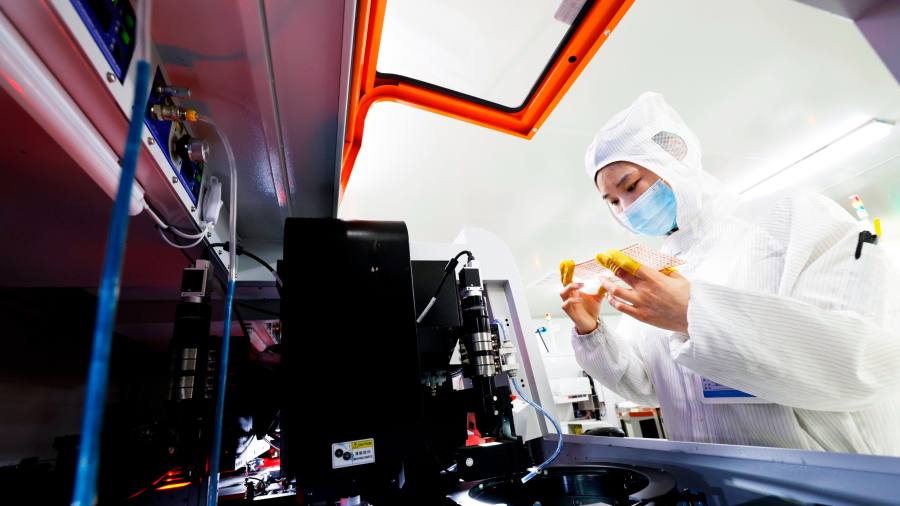Receive free Global trade updates
We’ll send you a myFT Daily Digest email rounding up the latest Global trade news every morning.
The writer is Asia EM Equity Strategist at Morgan Stanley
The global economic paradigm is shifting quickly, and the “de-risking” of supply chains is a crucial topic. Some have argued that de-risking while attempting generational leaps in technology and decarbonisation is not a realistic objective. Critics of such a push suggest that it will result in a breakdown of trade and investment, guaranteeing higher inflation. But we are optimistic that it can happen without causing a major shock to the global economy.
The shift towards a multipolar world has been developing over the past five years, and this regime is now entrenched. Security, rather than economic efficiency, is the new imperative for policymakers amid hegemonic US-China rivalry and the reverberations of Russia’s war in Ukraine. Stark lines of sovereignty are being drawn over technology that has been produced by highly globalised research and development programmes over recent decades.
Significant imbalances and concentrations in global market shares have built up across many segments of the international economy since the 1990s and it is clear from the disruptions that occurred during the Covid-19 pandemic that this needs to change.
The scale of the new investment required to de-risk supply chains will be enormous. Our analysts project a cost of $1.5tn to support friend-shoring and onshoring of supply chains including those for advanced semiconductors and critical minerals, while the global electric vehicle battery industry will require $7tn of capital expenditure over the next 20 years. Committed investment in clean energy has exceeded $2tn since 2021, helped by government incentives of more than $500bn.
A multipolar policy toolkit is emerging to channel resources into this endeavour, encompassing large subsidy programmes, expanded export and investment controls and new regulatory frameworks.
For a successful transition away from the globalised regime, policymakers must continue to work with the corporate sector and focus on the most critical nodes. Careful implementation will be needed to preserve the collaboration that has been key to technological breakthroughs, such as the development of extreme ultraviolet lithography, the technology used in advanced microchips.
Given the challenges, why are we more sanguine about the inflation and growth dangers of supply chain de-risking? We see three reasons for optimism. First, global growth will be boosted by the immense capex programmes from a variety of companies around the world, creating a new driver of demand and employment. Second, intense competition for emerging technologies is likely to boost productivity — consider the examples that came out of cold war-related research and development, including semiconductors and satellite communications, and the potential unlocked by AI. Finally, the higher costs of alternative supply chains will be mitigated by the additional capacity they bring.
As examples of the positive feedback loop between policy support and technological progress, our analysts see green electricity generation costs falling through 2030, with capital costs for wind and solar generation dropping 50 per cent, making them 35 per cent cheaper than fossil fuels on average at that point. We also see the cost of lithium-based electric vehicle battery storage falling almost 40 per cent below current levels by 2030, with potential sodium ion batteries being potentially 20 to 30 per cent more cost-effective than that.
But the risk of widespread global decoupling is high, given the temptation to weaponise economic interdependence amid current conflicts. The high stakes of success or failure in emerging industries such as artificial intelligence, advanced semiconductors, quantum computing and renewables are also motivating protectionism. Indeed, current policy trends could fuel a cycle where the defensive actions of one country to reduce supply chain risks reinforce the concerns of trading partners, leading to industrial policy tit-for-tats that leave us all worse off.
International communication and compromise will be key to avoiding this scenario. Rather than indiscriminate reshoring and economic isolation, we believe the end goal of de-risking supply chains can be achieved through a combination of higher inventory buffers and greenfield capex, which would boost and diversify production capacity. Such an outcome could put a multipolar economy on an even more resilient and balanced footing than the globalised world that is being left behind.
Read the full article here



